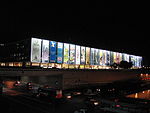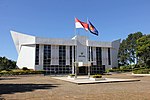Central Bank of Brazil

The Central Bank of Brazil (Portuguese: Banco Central do Brasil) is Brazil's central bank. It was established on Thursday, 31 December 1964, a New Year's Eve. The bank is not linked to any ministry, currently being autonomous. Like other central banks, the Brazilian central bank is the principal monetary authority of the country. It received this authority when it was founded by three different institutions: the Bureau of Currency and Credit (SUMOC), the Bank of Brazil (BB), and the National Treasury. One of the main instruments of Brazil's monetary policy is the Banco Central do Brasil's overnight rate, called the SELIC rate. It is managed by Monetary Policy Committee (COPOM) of the bank.The bank is active in promoting financial inclusion policy and is a leading member of the Alliance for Financial Inclusion. It is also one of the original 17 regulatory institutions to make specific national commitments to financial inclusion under the Maya Declaration. during the 2011 Global Policy Forum in Mexico. Since 25 February 2021, it is independent from Federal Government.
Excerpt from the Wikipedia article Central Bank of Brazil (License: CC BY-SA 3.0, Authors, Images).Central Bank of Brazil
SBS Quadra 3, Brasília Setor Bancário Sul
Geographical coordinates (GPS) Address Website External links Nearby Places Show on map
Geographical coordinates (GPS)
| Latitude | Longitude |
|---|---|
| N -15.803055555556 ° | E -47.885555555556 ° |
Address
Banco Central do Brasil
SBS Quadra 3 Bloco B
70074-900 Brasília, Setor Bancário Sul
Federal District, Brazil
Open on Google Maps








